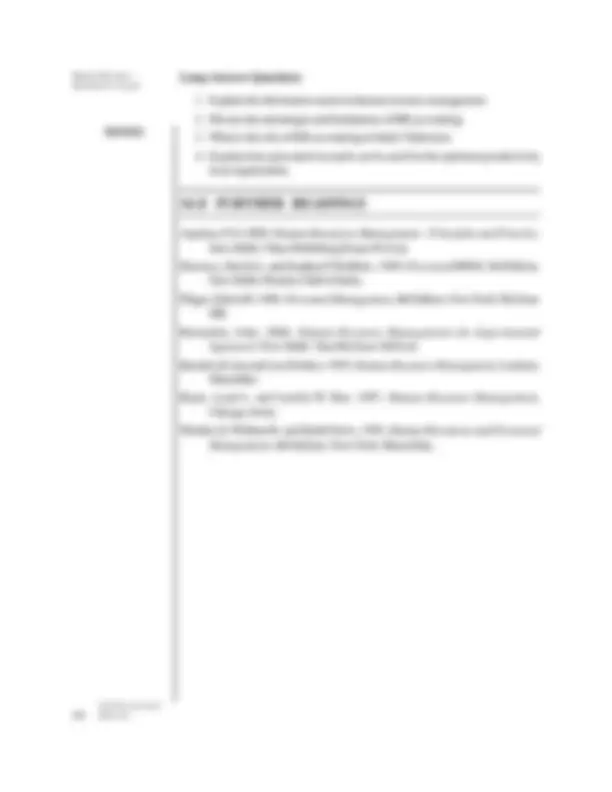



Study with the several resources on Docsity

Earn points by helping other students or get them with a premium plan


Prepare for your exams
Study with the several resources on Docsity

Earn points to download
Earn points by helping other students or get them with a premium plan
Community
Ask the community for help and clear up your study doubts
Discover the best universities in your country according to Docsity users
Free resources
Download our free guides on studying techniques, anxiety management strategies, and thesis advice from Docsity tutors
Human Resource Management (HRM) is a strategic and comprehensive approach to managing people within an organisation. It involves recruiting, hiring, training, evaluating, and rewarding employees to maximise their performance and align with the organisation’s goals. HRM also ensures compliance with labour laws, fosters a positive workplace culture, and supports employee development and well-being. By managing workforce planning, performance, compensation, and employee relations, HRM plays a vital role in organisational success. In today’s dynamic business environment, HRM is increasingly data-driven and aligned with long-term strategic planning, making it an essential function in both large corporations and small enterprises.
Typology: Lecture notes
1 / 2

This page cannot be seen from the preview
Don't miss anything!


Human Resource Information System
Self-Instructional Material 177
HRIS provides information necessary for planning, controlling, decision- making and preparing reports. A computerized HRIS is an information system that makes use of computers to monitor, control and influence the movement of human beings from the time they indicate their intention to join an organization till the time they leave the organization. HRA is the measurement and reporting of the costs incurred for recruiting, hiring, training and developing employees and their present economic value to the organization. Human resource accounting helps in knowing whether human asset is being built up in the business or not. The HR audit should do a thorough probe, evaluating HR policies, programmes, philosophy, practices and concepts and comparing with standards and with those of the personnel records of the said organization and other organizations.
Absenteeism: It means the habitual non-presence of an employee at his or her job. Amortization: It means the deduction of capital expenses over a specific period of time (usually over the asset’s life). Employee handbook: It is a written or electronic document containing summaries of the employer’s policies and benefits designed to familiarize employees with various matters affecting the employment relationship. Bibliography: It is a list of the books referred to in a scholarly work, usually printed as an appendix.
Short-Answer Questions
Human Resource Information System
Self-Instructional 178 Material
Long-Answer Questions
Aquinas, P. G. 2005. Human Resources Management – Principles and Practice. New Delhi: Vikas Publishing House Pvt Ltd. Decenco, David A. and Stephen P. Robbins. 1989. Personnel/HRM, 3rd Edition. New Delhi: Prentice-Hall of India. Flippo, Edwin B. 1984. Personnel Management , 4th Edition. New York: McGraw Hill. Bernardin, John. 2004. Human Resource Management–An Experimental Approach. New Delhi: Tata McGraw Hill Ltd. Beardwell, Ian and Len Holden. 1995. Human Resource Management. London: Macmillan. Byars, Loyd L. and Leaslie W. Rue. 1997. Human Resource Management. Chicago: Irwin. Werther Jr, William B. and Keith Davis. 1993. Human Resources and Personnel Management , 4th Edition. New York: Macmillan.